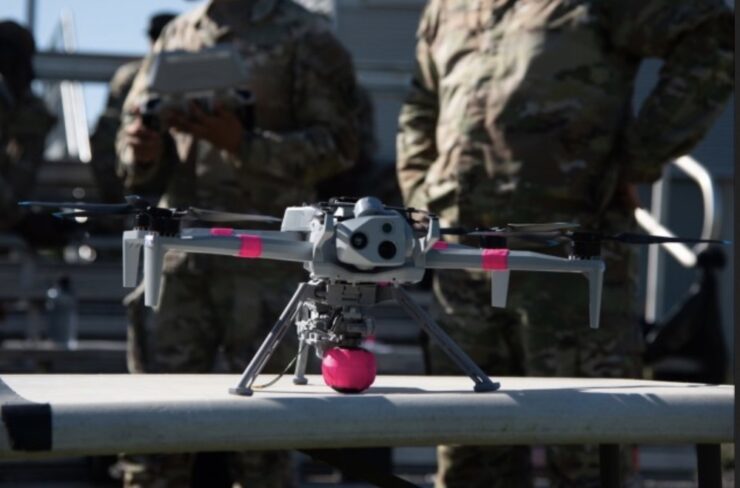
With the end of World War II in 1945, the United States of America gained a reputation as the strongest military force in the world. This standing was further strengthened during the 1990s with the end of the Cold War. Based on defense budget, global reach, advanced technology, and overall capabilities across land, air, sea, cyber, and space domains, the U.S. is still considered the world’s strongest overall military force. Following the devastating 9/11 attacks, the U.S. revolutionized modern warfare by introducing drones into military operations.
The MQ-1 Predator, used during the War on Terror, made the concept of drones commonplace in households across America. Today, with the ever-expanding drone industry across military, commercial, and civilian applications, nearly everyone around the world knows what drones are. And while the U.S. Department of Defense (DoD) spends roughly $7–8 billion annually on drone technology, dwarfing what other nations spend, regulatory roadblocks have greatly hindered U.S. military drone applications.
This has been made abundantly clear by the progress being made by the Ukrainian Army in its ongoing conflict against Russia. Ukraine has shocked the world with how it has been able to think outside the box when it comes to designing and implementing novel drone technology. This has left the U.S. scrambling to keep up with how drones can be used on the battlefield. However, on June 6, 2025, President Trump issued two executive orders, Unleashing American Drone Dominance and Restoring American Airspace Sovereignty, that have cleared many of the regulatory blockades that the U.S. drone industry had been slowed down by.
Recently, the U.S. Army released footage on just one way they are taking advantage of the freedoms provided by these executive orders. At the Grafenwoehr Training Area in Germany, conventional U.S. Army forces successfully tested a live grenade drop using a small drone. The test marked the first time an M67 fragmentation grenade was launched from a drone during a live-fire exercise, signaling a potential new capability for dismounted soldiers.
The drone used in the test was the Skydio X10D, a military-grade quadcopter developed by Skydio, an American drone company founded in 2014 and headquartered in California. Skydio is known for its autonomous flight technology and is a key player in the DoD’s Blue sUAS program, an initiative that certifies domestically produced drones that meet rigorous standards for cybersecurity, supply chain integrity, and operational reliability for military use. The X10D is designed specifically for defense and government use, offering advanced obstacle avoidance, encrypted communications, and modular payload support.
In this test, the X10D was paired with the U.S. Army Combat Capabilities Development Command’s (DEVCOM) Audible dropper, a lightweight payload release system engineered for precision munition delivery. The combined system allowed soldiers to safely and accurately drop a live M67 grenade onto a designated target. According to the Army, the goal was to demonstrate how a small, portable drone could give troops a low-cost, easily deployable explosive option in the field.
“This is a true sandbox-to-soldier success story,” said Mike Rose, an engineer with DEVCOM’s Armament Center. “It shows how we can rapidly prototype, iterate, and deliver novel capabilities directly into the hands of soldiers.” First Lieutenant Aaron Nichols of the 2nd Cavalry Regiment added, “Being able to drop a grenade from a drone gives us flexibility we didn’t have before. It’s simple, but incredibly effective.”
The live-fire event was part of the Army Expeditionary Warrior Experiment (AEWE), which lets soldiers test emerging technologies in realistic operational settings. The Skydio-Audible system was one of several technologies being evaluated, but it stood out for its combination of simplicity, precision, and battlefield relevance. Given the successful demonstration and the evolving operational landscape, such technology is poised to become an integral part of future small-unit tactics. With regulatory barriers lowered, these tools could soon be standard equipment for squads operating in complex environments.
As the U.S. military adjusts to the rapid proliferation of drone technology on modern battlefields, integrating lightweight, weaponized sUAS platforms reflects a broader shift toward decentralized, soldier-level capabilities. The success of the Skydio X10D grenade drop test exemplifies how recent regulatory changes are enabling faster deployment of innovative tools that empower soldiers directly. By combining emerging hardware with real-world soldier feedback, the Army is positioning itself to maintain tactical superiority in an era defined by agility, autonomy, and adaptability.
|